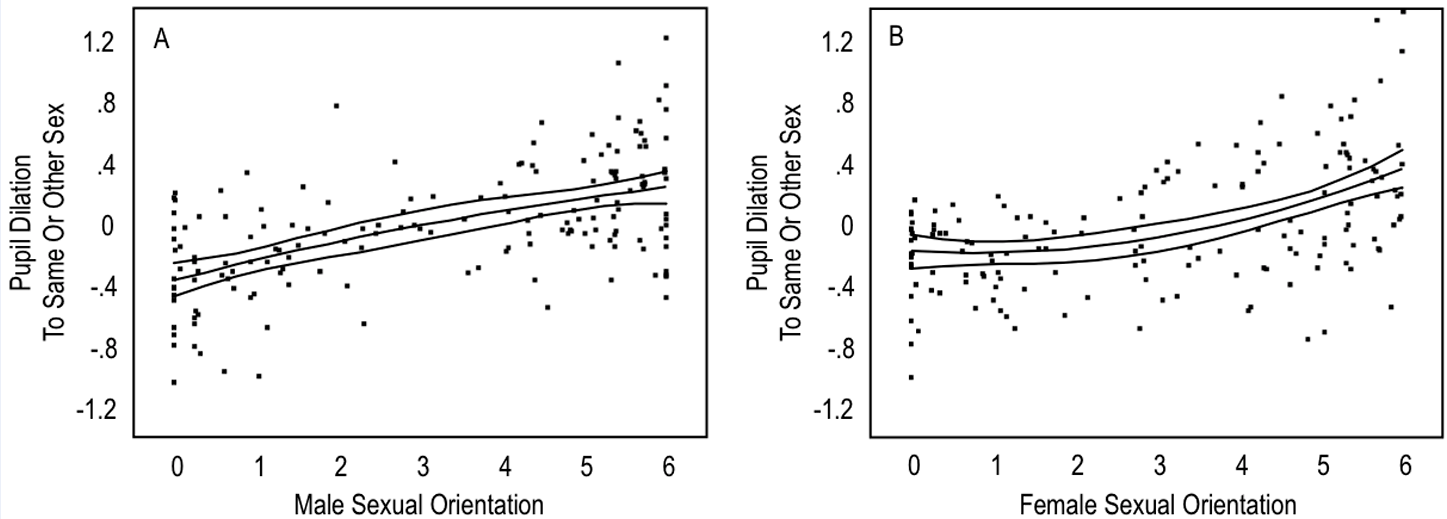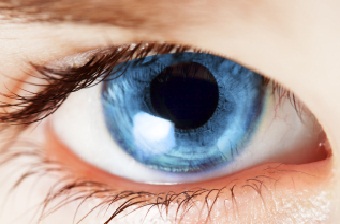Pupil dilation reveals sexual orientation in new Cornell study
August 7, 2012
There is a popular belief that sexual orientation can be revealed by one’s pupil dilation when viewing attractive people, but there has been no scientific evidence.
Now Cornell University researchers have confirmed it in an experiment, using a specialized infrared lens to measure pupillary changes in participants watching erotic videos.
Pupils widened most to videos of people who participants found attractive, thereby revealing where they were on the sexual spectrum from heterosexual to homosexual.
Previous research explored these mechanisms either by simply asking people about their sexuality, or by using physiological measures such as assessing their genital arousal. These methods, however, come with substantial problems.
“We wanted to find an alternative measure that would be an automatic indication of sexual orientation, but without being as invasive as previous measures. Pupillary responses are exactly that,” says Gerulf Rieger, lead author and research fellow at Cornell.
“With this new technology we are able to explore sexual orientation of people who would never participate in a study on genital arousal, such as people from traditional cultures. This will give us a much better understanding how sexuality is expressed across the planet.”

Panel A shows men’s responses and Panel B shows women’s’ responses. Y Axes reflect z-scores within participants: positive numbers indicate dilation to the same sex, and negative numbers indicate dilation to the other sex. X Axes reflect self-reported sexual orientation: 0 represents an exclusive heterosexual orientation, 3 an even bisexual orientation, and 6 an exclusive homosexual orientation. Triple lines represent regression coefficients with 95% confidence intervals. Dots represent participants’ average scores.
The new Cornell study adds considerably more to the field of sexuality research than merely a novel measure. As expected, heterosexual men showed strong pupillary responses to sexual videos of women, and little to men; heterosexual women, however, showed pupillary responses to both sexes. This result confirms previous research suggesting that women have a very different type of sexuality than men.
Moreover, the new study feeds into a long-lasting debate on male bisexuality. Previous notions were that most bisexual men do not base their sexual identity on their physiological sexual arousal but on romantic and identity issues. Contrary to this claim, bisexual men in the new study showed substantial pupil dilations to sexual videos of both men and women.
“We can now finally argue that a flexible sexual desire is not simply restricted to women — some men have it, too, and it is reflected in their pupils,” says Ritch C. Savin-Williams, co-author and professor in Human Development at Cornell. “In fact, not even a division into ‘straight,’ ‘bi,’ and ‘gay’ tells the full story. Men who identity as ‘mostly straight’ really exist both in their identity and their pupil response; they are more aroused to males than straight men, but much less so than both bisexual and gay men,” Savin-Williams notes.
The researchers are confident that their new measure will aid in understanding these groups better and point to a range of sexualities that has been ignored in previous research.
